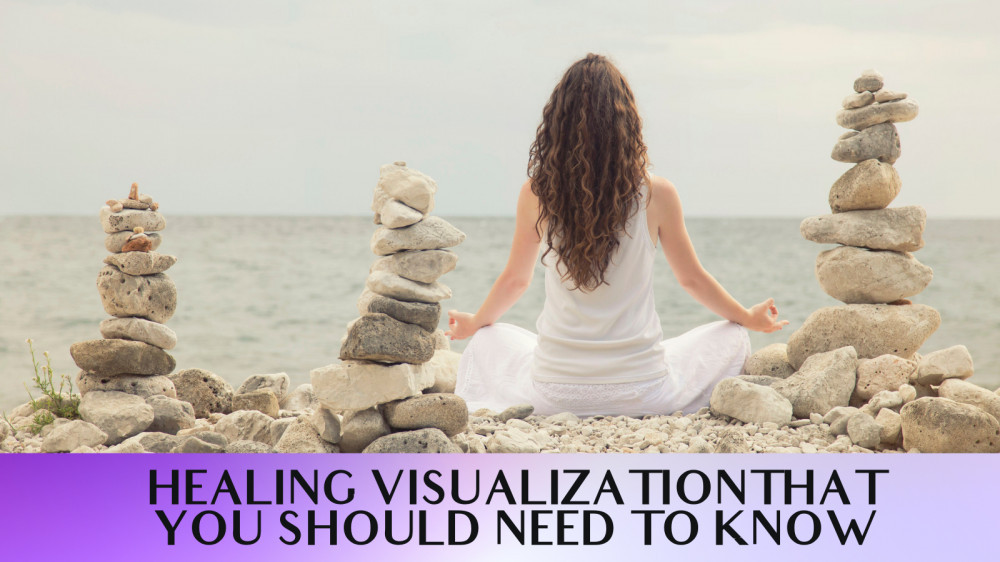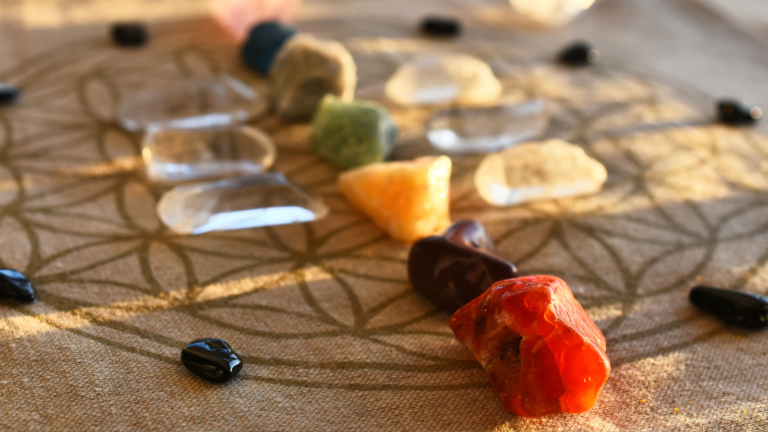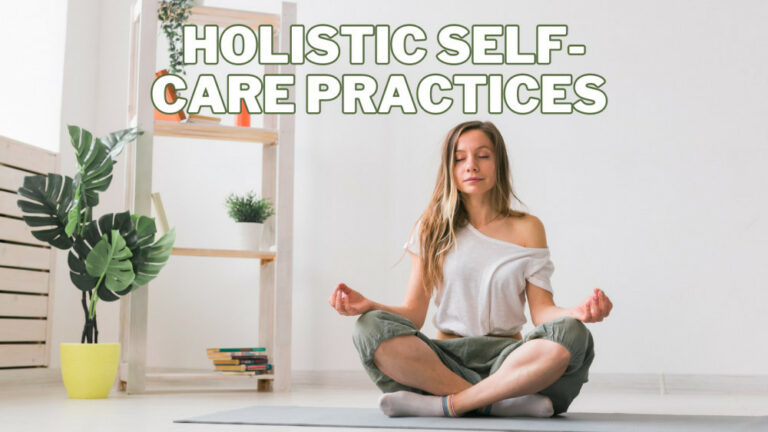Healing Visualization And What You Need To Know
Healing Visualization And What You Need To Know
Give this a shot. Think about a carefree day at the beach or your most recent trip for a few uninterrupted seconds.
Perhaps you spent your days lounging on a towel in the sand, feeling the sun beat down, listening to the soothing sound of the waves, and feeling relaxed, content, and at peace.
The only daily concern that occasionally entered your mind was what to have for dinner was far away. You may not be aware, but your body reacts to this image.
Do your neck muscles feel a little looser and more relaxed? Has your face unintentionally started to smile?
The things we think, dream or remember—good or bad—affect our physical selves at the cellular level. Many professional athletes and Olympic hopefuls employ this strategy; they visualize success to assist in achieving their objectives.
A good sports psychologist who can lead a team to a championship is worth her weight in gold because sports psychology is a vast industry. The mental tenacity of athletes is frequently praised. However, even if we are not athletes, we can use this mind-body connection to reduce stress and promote physical healing.
We have access to the potent visualization tool (mental imagery) within ourselves. Our brains are kind of where cause and effect begin. And controlling our thoughts is an essential life and health step. Anyone and everyone can gain something from it. You can practice guided imagery independently, with a CD or app, or with a health care provider.
What Is Visualization?
If you're unsure of visualization, looking it up in the dictionary may only raise more questions for you. “The formation of mental visual images or the act or process of interpreting visual terms or of putting them into visible form” is how the Merriam-Webster Dictionary defines visualization. If you're like most people, this definition probably doesn't make much sense to you.
Imagine in your mind the things you want in your life, according to a condensed definition of visualization. Usually, visualization goes well with mindfulness and meditation. This procedure would involve finding a calm environment, closing your eyes, calming your body, and beginning to think.
For instance, if you want to receive recognition for your contributions at work in the future, close your eyes and visualize receiving the recognition. You might imagine what it would be like to be the winner and hear your name announced.
You would consider your appearance and what you were wearing. You might even picture the specifics of who is handing you the award, what they say about you, and how it feels in your hands.
Think about sports to get a better idea of what visualization looks like.
A lot of professional athletes practice visualization before competitions. They consider how they will shoot the ball, pass it, throw it, catch it, hit it, kick it, or do whatever their sport requires.
According to studies, basketball players have been able to increase the percentage of successful free throws by simply visualizing making free throws without even practicing shooting the ball.
Two Types Of Visualization
In performance psychology, there are two primary types of visualization: process and outcome.
- It's called outcome visualization, when you picture the result. For instance, you picture yourself winning a competition and celebrating while holding a trophy.
- When you visualize the steps necessary to achieve your end goal, you engage in process visualization. You might, for instance, list your practice and training routines and picture yourself carrying them out to the best of your ability.
Like everything related to mental health, each person will favour a particular set of visualization techniques. Many non-contact athletes, for instance, will choose to “feel the feeling” of victory and activate their kinesthetic response.
Athletes may concentrate more on their actions when under pressure to perform aggressively. For instance, a basketball player might picture their legs as vital and their shot as soft as possible as it approaches the rim.
In the end, visualization is not a universal strategy. To help you focus on the precise image you want in your mind, find a trigger phrase or keyword for whatever it is you are visualizing.
What Is The Science Behind Visualization?
If you're unfamiliar with visualization, you might wonder whether it works and how. Simply put, visualization is a mental exercise. You could say that you are getting ready to experience whatever you want in life. You are more likely to see something in your life as you concentrate on it.
The adage “you get in life what you expect” has probably been mentioned. Because your mind has become at ease and you are not subconsciously motivated to pursue what you want, you are more likely to succeed if you don't expect much from life.
However, when you actively visualize the things you want for yourself, you develop the internal drive to pursue them. You can more clearly see and believe that something is possible in your life the more you visualize it. You'll search for chances to make it happen.
The neural architecture of your brain plays a role in actual visualization science. You form neural connections in the same way as if you had carried out the activity as you continue to think about and picture the things in your life that you want.
This is how the basketball players raised their success rate even though they never shot a ball during practice. They were preparing their minds to be successful shooters. Just thinking about it can stimulate your nervous system even if you have never engaged in the activity.
Is Visualization Effective?
Look up “visualization” on Google.
There are lists of professional athletes who have succeeded by using their mental toughness.
Before entering their competitive environment, they've learned to concentrate on crucial movements.
For instance:
- NBA basketball player Alex Honnold, a free solo rock climber Bronson James
- Michael Phelps is a successful swimmer who has garnered 28 Olympic medals.
- Greg Louganis, an Olympian diver with multiple gold medals
- Former Navy Seals like Jocko Willink or David Goggins
They are aware of the value of both physical and mental exercise.
Patients with strokes have used visualization as a mental exercise to stimulate neuroplasticity. Just thinking about it has a similar effect to exercising.
The Netflix series Queen's Gambit serves as an illustration of visualization.
Chess phenom Beth Harmon advances in the ranks by first becoming familiar with the game. The moment she decided she wanted to win the game. She reads all chess-related books.
She becomes an expert in every play she can find. She continues to practice; before she goes to sleep, she uses all of her senses to imagine the upcoming chess match's moves.
See a dancer getting ready for her performance offstage. She dances in her head, marking the steps with her feet and arms. After performing, the dancer watches a replay of the performance with the judges' critiques.
How To Visualize For Health
Although there is no right or wrong way to visualize, it does seem to work better when we use more senses. Making the image, you use more distinctive might also be beneficial. For instance, if you enjoy gardening, picture yourself in your favorite outdoor space, surrounded by nature.
For any body part, this visualization would be effective.
1. Choose Your Focus
Make a drawing of the relevant body part on paper. What part of your artery is blocked, for instance, if you have one? The paper's area can be highlighted or outlined. Do the same if any part of your heart is weak. Remember that this visualization belongs to you and you alone.
It's okay if you find it meaningful to picture your heart as the typical red Valentine's Day drawing we all grew up with. Alternatively, you might be drawn to a detailed illustration of the human heart found in an encyclopedia or ask your cardiologist for specific details to include in your drawing. A perfect, anatomically correct body is less crucial.
2. Set Your Healing Goal
Create an “after” image in your mind after preparing your “before” image. If you have an arrhythmia, picture your heart beating steadily. If your blood pressure is too low, you might imagine a beating heart that can efficiently pump blood throughout your body. Obstructed arteries?
Imagine arteries that are smooth and free of plaque. You see what I mean. Simply picture your idealized version of a healthy heart if you do not currently have a specific heart condition. You are welcome to draw the “after” image for reference on a different piece of paper.
3. Relax
Start by practicing some meditation. With this, you'll feel more at ease and be able to maintain your visualization focus.
4. Visualize Healing
Relax into your healing image. Imagine transforming your “before” photo into your “after” photo. Utilizing white light is a well-liked method. Imagine yourself taking in pure, bright light with each breath.
As it fills you, this light heals, calms, and drives out all stress and negative memories of the past. Imagine the healing light slowly descending your chest and gathering around your heart (or any other injured or problematic area).
Imagine black light (negative energy) connected to that region, emitting from your pores, the bottoms of your feet, or other exit points as you exhale. As the black light or smoke leaves your body and dissipates into the universe, release all worries, tension, anxiety, and fear. Repeat until there is no longer any blackness and your “after” image is entirely in place and surrounded by pure white energy.
A minute or two is all that is necessary for a healing visualization exercise. Always take several full, diaphragmatic breaths after completing a visualization. Open your eyes gradually, and when you're ready, stand up. Some people also enjoy doing simple stretches to get their bodies ready for exercise.
What To Expect When Learning Visualization Techniques
Most visualization exercises start with relaxation and create an image in your head. The extent of your condition, the vividness of your imagery, and your resolve will all influence how long it takes before you start to see results.
The “possibilities of healing” are what Newman asks her clients to be open to. I tell them there is no ideal way to visualize and that every person's experience is different, she says. “I caution them that they may experience minor distractions, such as an itch or their mind wandering. I only ask that they be aware before returning to their previous state of silence.
Hendricks claims that visualization is typically a pleasant, uplifting experience and is “much like seeing an inner movie.”
Benefits of Visualization
1. Make Your Imagination Unlimited
You can imagine yourself being and looking the way you want, engaging in the activities you enjoy, and having the possessions you desire. You can become anyone you want to be and lead any life you desire in your imagination. Nothing is off-limits.
If you keep visualizing in this manner, without putting your dreams to rest with unfavourable thoughts, you will start to alter your life and bring about the things you envision.
You can make almost anything you imagine a reality if you combine motivation, ambition, and discipline.
2. It Is A Helpful Training Tool For Athletes
They can enhance their performance by practicing in their minds. These mental drills prepare the mind to behave, respond, and care for the body as pictured in actual life.
This method is one that many athletes use in addition to their physical preparation. For instance, runners can visualize themselves dashing, effortlessly and without effort to cross the finish line first in addition to physical training.
This technique can be used by weight lifters, swimmers, basketball players, and athletes from all sports.
3. Visualization Can Aid In Habit Change
Visualization can aid in the development of new habits and the modification of old ones.
You must imagine yourself in scenarios that cause the habit, behaviour, or reaction you want to change and then picture yourself taking the desired action.
You will eventually imprint this mental scene on your subconscious mind by repeatedly practicing it, and you will begin acting and behaving accordingly.
4. Visualization Of Originality
The primary tool in the creative visualization technique is visualization. If you are unfamiliar with the term, creative visualization is a visualization technique that you can use to change your life for the better. It makes use of the law of attraction to bring your goals and dreams to life.
You will eventually manifest your desired situation or goal in your life if you consistently visualize it while adhering to the principles of creative visualization. In my book Visualize and Achieve Your Dreams, I detail how to use this technique and offer all the necessary direction and advice.
5. Success Requires Imagination
Every successful person uses their imagination to visualize the future they want to create. They have better chances of succeeding in their goals as a result.
If you read the biographies of successful people, you'll see that they all had a constant vision of success in their respective fields.
As you can see, visualization offers a lot of advantages. It doesn't just refer to daydreaming. It is a very useful tool that you can apply to all aspects of your life.
6. Increase Your Positivity
We converse with ourselves internally constantly throughout the course of the day. You want to be a friend to yourself, not a destructive enemy, so be aware of your thoughts and choose them wisely.
You can start attracting positive outcomes into your life by thinking more positively today. The first day won't bring about any noticeable changes, but reinforcement works like sowing a seed. You'll start to feel happier right away, and over time, things in your life will start to change.
7. Reduced Stress
One of the best ways to reset your mind when it feels off balance is through visualization. Slow music and daydreaming are effective ways to organize your thoughts, get mentally ready, and relieve stress. My favourite method for reducing stress is to lie on your back and visualize the stress in your body as warm lava concentrated at the top of your head.
After that, visualize it slowly pouring down your body, including your shoulders, neck, and body. As you visualize the stress leaving your head, you should experience a sensation rolling down your body. I do this to help me fall asleep, and I've never been able to stay awake past my shoulders.
8. Improve Performance
Visualizing yourself in stressful situations is one type of mental imagery that improves performance. You can develop coping mechanisms and improve how you handle future anxieties by mentally preparing for difficult situations.
Jim Bauman, Ph.D., USA Swimming's consulting sport psychologist, advises labelling a personal item as a constant reminder to keep a positive outlook when things are difficult. For instance, the letter “P” on your computer can remind you to adopt a perspective that emphasizes your strengths rather than your weaknesses.
Conclusion
Visualization can be a remarkable tool for preparing for a stressful situation. According to research, anticipatory visualization can enhance your physical and mental performance.
Success in esports can be gained or lost in seconds, so it's critical to take advantage of every tool at your disposal to gain an edge.
Habits are formed through repetition; if you visualize success repeatedly, you'll be more likely to succeed when the situation arises. Visualizing your success will boost your confidence and train your brain for success wherever you go, whether your goal is to improve your gaming abilities or your performance at work.
I trust you enjoyed this article on Healing Visualization And What You Need To Know. Please stay tuned for more blog posts to come shortly. Take care!
JeannetteZ
>>>Please click here to read my all-inclusive article about A Comprehensive Guide To Healing Naturally<<<
>>>Are you interested in Natural Healing through Herbs? Please click here for my #1 Recommendation<<<
Your Opinion Is Important To Me
Thoughts? Ideas? Questions? I would love to hear from you. Please leave me your questions, experience, and remarks about this article on Healing Visualization And What You Need To Know in the comments section below. You can also reach me by email at Jeannette@Close-To-Nature.org.
Disclosure
This post may contain affiliate links. As an Amazon Associate and other affiliate programs, I earn from qualifying purchases at no extra cost to you. Read my full affiliate disclosure.
You might also enjoy these blog posts:
Most Essential List Of Healing Herb Plants
What You Need To Know About Sound Healing
Meditation Techniques And Its Health Benefits
The Ultimate Guide To Massage Therapy
Easy Steps To Grow Garlic In A Container






















